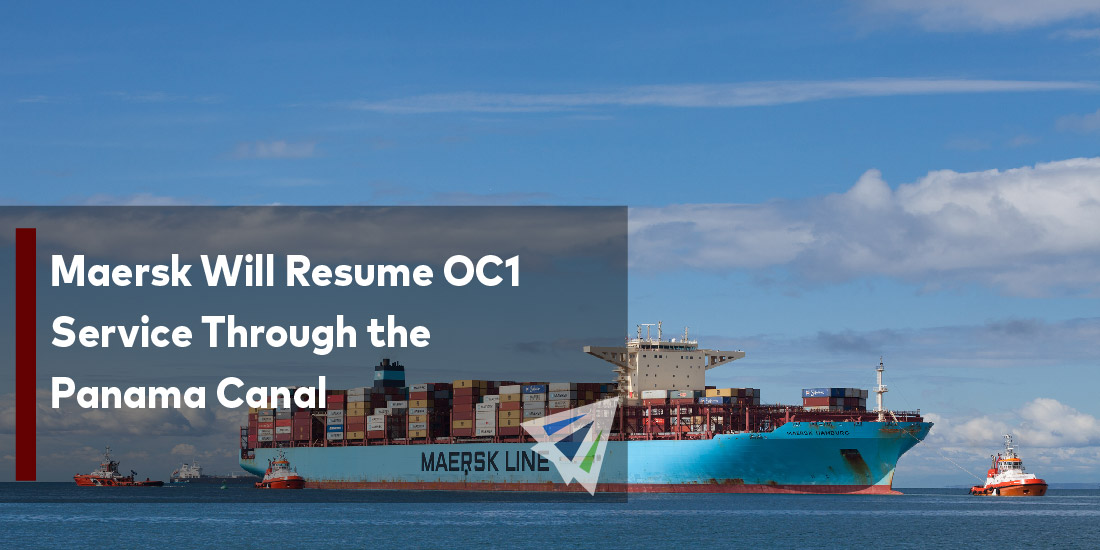Ocean carrier Maersk is preparing to resume its Ocean-Americas (OC1) service’s transits via the Panama Canal, a strategically significant step that is scheduled to start next month. This decision follows the announcement by the Panama Canal Authority (ACP) of a minor increase in the number of daily vessel transits that are authorized through the drought-affected channel.
OC1 Operations Resume Amidst Transit Changes
Maersk has been moving freight between ports on the Pacific and Atlantic coastlines since January by using the nearby canal train. But the carrier has been keeping a close eye on things, particularly since the ACP just increased the number of transit slots available. As a result, it has decided to resume operating its OC1 service over the canal.
The rotation that was previously in place before the Panama Rail link was temporarily changed will be resumed when Maersk’s OC1 service via the canal is restored. The carrier has laid up a phased-in strategy for using the rail link, with the goal of finishing it by the end of May.
In the past, Maersk operated a two-loop service that included ports in Philadelphia, Charleston, Manzanillo, Balboa, Tauranga, and Melbourne, among other places. Maersk has released a new rotation schedule that includes ports including Philadelphia, Charleston, Balboa, Melbourne, Port Chalmers, Tauranga, Manzanillo, Cristobal, and Cartagena, after the restoration of OC1 service across the canal.
Notably, Maersk has been using the canal for its other services as well, so it hasn’t been completely dependent on it for operations. Likewise, within THE Alliance network, several major maritime carriers like as Hapag-Lloyd and Ocean Network Express have verified the complete resumption of transits via the Panama Canal for their trans-Pacific services between Asia and the US East Coast.
This latest event comes after the ACP decided to raise the number of vessel slots across the canal each day from 24 to 27 starting at the end of March. This increase results from increased water levels on Gatun Lake, an important canal system site, after significant rainfall in the canal watershed.
When drought restrictions caused long lines of vessels to wait to cross the channel in August of last year, the situation had gotten worse. Nonetheless, the ACP is upbeat about the future given the recent improvement in water levels. They have indicated the possibility of further increasing the slots offered through auctions, contingent on the Gatun Lake’s level projections.
Wrapping Up
Reductions in line waiting times for both northern and southbound transits are among the most positive evidence of progress. Recent ACP statistics show that wait times for unscheduled boats have drastically decreased to less than a day, which is a significant improvement over the previous few months.
About 49 ships, 41 of which have transit reservations, are now waiting to travel through the canal, according to the most recent statistics. This suggests a more seamless operational environment and is encouraging for the efficacy and efficiency of marine trade via this essential global trade route.
Should you have any questions regarding this, please reach out to our team today.
Additionally, we have our weekly market updates that can provide you with relevant freight news, updates, developments across the industry, and more.
